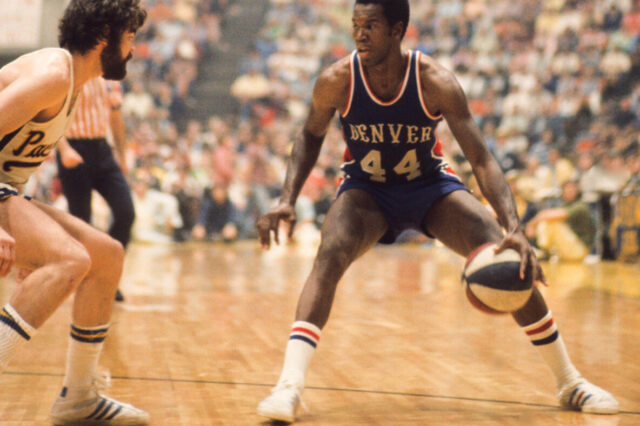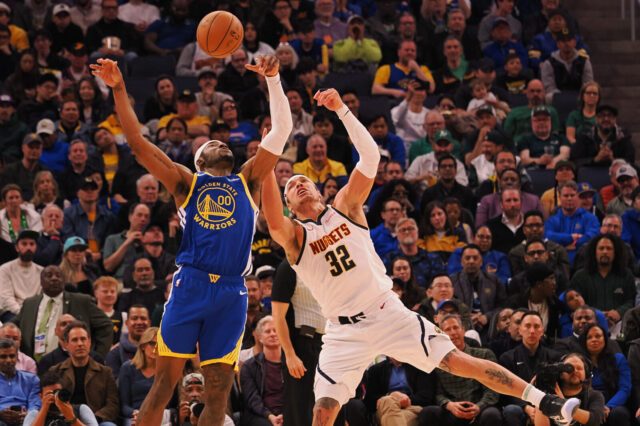If there was ever a player with a name that was guaranteed to throw Chris Marlowe for a loop, it’s Jesusemilore Talodabijesu Ojeleye, the hybrid forward from Southern Methodist University.
Ojeleye, who goes by Semi, is the son of Nigerian parents, and was raised in Ottawa, Kansas. Semi was one of the top high school players of all time in Kansas, and was heavily recruited, ultimately choosing to play for Coach K at Duke. He sat on the bench his first two seasons, averaging 6.2 minutes per game before deciding to transfer to SMU. He sat out the 2015-16 season, but exploded this last season for the Mustangs, finishing as the AAC Player of the Year.
Semi is a great example of how timing is everything. At 6’8” and 240 pounds, with a 6’10” wingspan, he fits right in the sweet spot of height and weight for what the NBA is looking for in power forwards. There was a time when drafting tweeners (players too big to play small forward, too small to play power forward) was like spiking your party punch with hemlock. Teams were spending top 5 picks on Derrick Williams and Michael Beasley, hoping they could find a spot for them to play. Now teams are looking for players like that (not exactly like those two, mind you) with the ability to play in between the two forward positions.
Look at the NBA landscape for tweeners: Otto Porter is about to get a max contract, Harrison Barnes got $90 million from Dallas, LeBron James is the best player in the league, Kevin Durant is right behind him, Draymond Green is winning DPOY awards. The Nuggets played Wilson Chandler at power forward throughout the season, and drafted Juancho Hernangomez, who projects to play both forward positions at times.
For SMU, Ojeleye was the straw that stirred their drink on offense. He lead the team in minutes, field goal attempts, and usage rate. He was their leading scorer and second-best rebounder.
According to Hoop Math, 39.9 percent of his field goal attempts were 3-pointers, and he shot a remarkable 42.4 percent on 172 attempts. He was able to get to the rim frequently, taking 32.5 percent of his field goal attempts in that area. With his strength, he drew a foul on 50 percent of his field goal attempts. As a comparison, Gallinari’s free throw rate for his career is 45 percent.
This content is no longer available.
As for his strengths, I mean, come on – look at that picture. What stands out to you? Dude looks like he hasn’t skipped arm and chest day since he was 12.
That athleticism helps him defend on the perimeter as well as in the post. He can elevate for rebounds on both ends of the floor, but will need to learn to use his size to seal off defenders rather than just trying to out-jump them.
On film, he uses his agility and strength to stay in front of defenders in the post while preventing them from backing him down. NBA forwards may just realize, “Hey, I can just shoot over him,” but not every team starts players like LaMarcus Aldridge that can take advantage of that mismatch.
Ojeleye had a 61.9 effective field goal percentage on his jump shots, according to Sam Vecenie, an amazing stat and something that helps make him such a unique prospect. The 3-point shooting projection models I use have him shooting around 37 percent in the NBA, which would be outstanding for a power forward.
Some of the weaknesses in his game may be due to the system that SMU ran. The Mustangs went with a big lineup, oftentimes playing three guards all 6’5” or taller and two forwards 6’8” or taller. Instead of a man defense, SMU played zone. This helps share rebounds with other players (the second leading rebounder was a guard, Sterling Brown) and lowers the number of steal opportunities (Brown lead in steals, with 1.5, with Shake Milton being the only other player averaging more than one, with 1.2 per game).
That being said, he’s going to have to improve his defensive IQ chops once he gets to the NBA. He’ll have to learn his role in a defense, know when to switch, how to closeout, when to foul – all the nuances of defense for a power forward in the NBA. Because of his limitations in height and wingspan, he’s going to have to use position, timing, and anticipation to be great on defense.
In regards of a pro comparison, I think Ojeleye comps well to Harrison Barnes, the Mavericks current tweener. Both are from the Midwest, with solid offensive games geared towards putting the ball in the basket. They can guard the 3 and 4, but are most effective when pushed down to the power forward spot to help space the court. They aren’t going to blow the roof off with their defensive stats, but the plus/minus will show that they’re helping the lineup on the court outscore the opposing team.
DraftExpress has Ojeleye going towards the end of the first round. With the Nuggets holding the No. 13 pick in the draft, they could either attempt to trade down and take him later, or just take their guy, even if it seems a bit early. There are two Northwest Division opponents that each have two picks in the 20-30 range — Portland and Utah — that might be willing to swap their two picks for Denver’s one. If that meant Denver was able to draft Ojeleye and Jordan Bell, I would not be opposed to that route.
Ojeleye’s future is hard for me to predict. He could be a huge value, rewarding a team for investing in him despite his height and wingspan limitations and age. He could be a bust, unable to get his shot off against NBA defenders, unable to dribble against NBA defenders, and unable to defend NBA forwards.
I think his floor is being a fourth or fifth big off the bench, able to bring some skill on offense while being a zero on defense. I think his ceiling could be a hybrid forward that figures out the mental aspect of defense while using his athleticism to be a contributor on offense, a starter on a contending team.
I think there could be better options at 13 for the Nuggets, especially if a top-10 talent slides, but I wouldn’t be disappointed if the Nuggets walked away from the draft with Ojeleye in the fold.
Stiffs Prospects to Watch
This content is no longer available.


